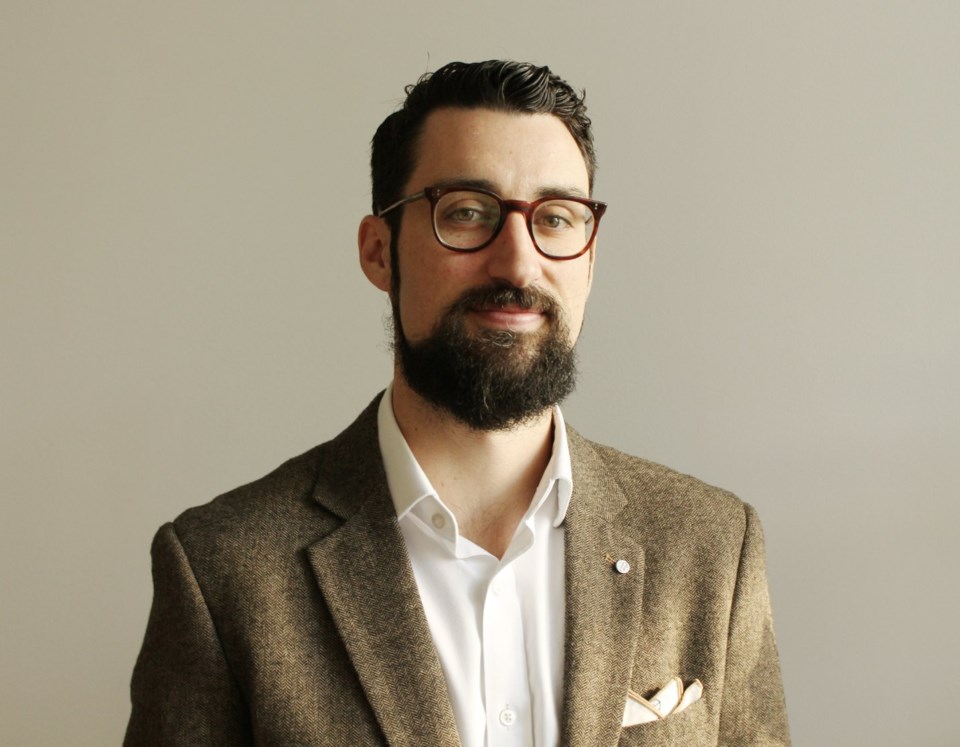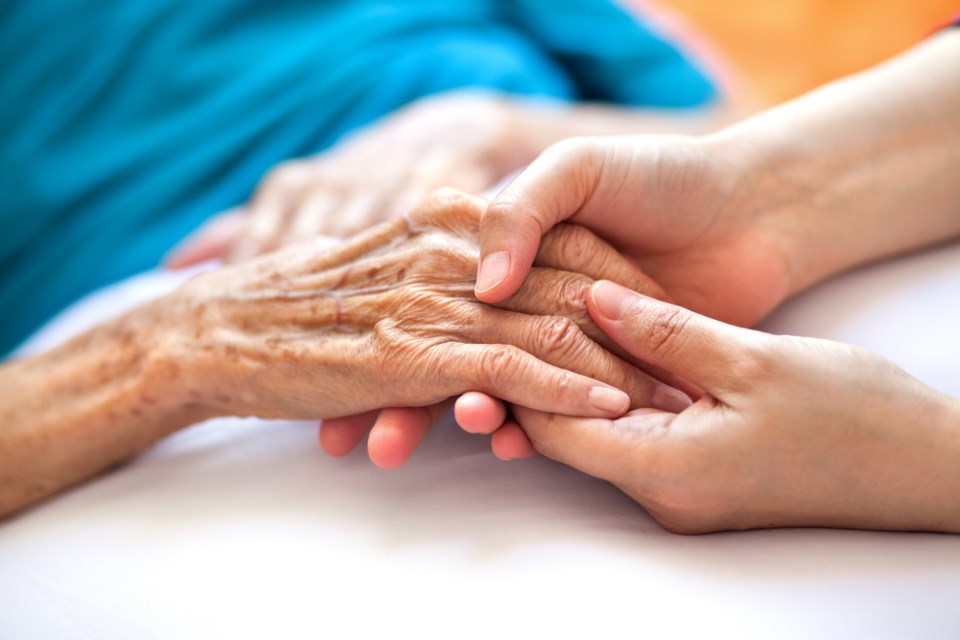Isobel Mackenzie lets out a long sigh.
The B.C. seniors advocate has paused in the middle of reading a NOW story about the last days of Anna Patano and Robert Pitman – two seniors who died at Burnaby care homes this year after spending many of their last days cut off from their loved ones because of COVID-19 visitor restrictions.
Patano’s daughter spent her last moments with her 91-year-old mother in a surgical gown, face shield, gloves and mask.
Pitman’s daughter couldn’t stand the idea her 93-year-old father might not recognize her during his last hours, so she pulled off her mask even though it was against the rules.
Their stories ring all too familiar for Mackenzie, who launched a survey in August to find out what COVID-19 visitor restrictions were doing to seniors in care and their families.
More than 13,000 people responded, and reading their stories has taken a toll, she says.
“Without a doubt, this is the most difficult report I have ever written,” she tells the NOW in a phone interview.
Coming from Mackenzie, who has more than 20 years’ experience working with seniors in care, that’s saying something.
We reached out to her after two different families contacted us independently to express grief and anger at their parents’ last days under COVID visitor restrictions at two different Burnaby care homes.
There were too many similarities to ignore: two residents, both in their 90s, both with dementia, who stopped eating when they were separated from their loved ones and then died after long periods of not being allowed to see them.
We wanted to know if their stories were part of a bigger tragedy that has played out in B.C.’s long-term care homes during COVID, and the answer from the seniors advocate was a resounding yes.
“I think what I found so difficult about this report was the overwhelming magnitude,” she says of the stories of loss and separation she has read. “We’re not talking just a dozen or hundreds; it’s thousands.”
‘Cascade of effects’
Robert Pitman and Anna Patano didn’t die of COVID-19 – not directly, at least.
By all accounts, Pitman never came into contact with the virus; the George Derby Centre, where he lived, only saw its first cases in early August, more than two months after he died.
And, while Patano was infected during a second outbreak at the New Vista Care Home, she never developed symptoms.
But their families believe the isolation they experienced under COVID-related visitor restrictions hastened their deaths.
One researcher in SFU’s gerontology department says there’s “something to be said for a cascade of effects” on seniors resulting from social isolation.
“Loneliness is associated with poor mental health outcomes, and some of the symptoms of depression are disruptions in sleep, loss of appetite, decreasing energy and fatigue. That may lead to decreasing physical activity,” Theodore Cosco says.
“Being lonely and isolated may not be the thing that causes it, … but it could be part of a chain of events.”
This is even more pronounced as seniors age, according to Cosco, due to what gerontologists refer to as “frailty” – a compounding effect of stressors, such as malnutrition or lack of sleep, on the body with age.
Troubling trends

Mackenzie’s report, released Tuesday, says quarterly stats show “troubling trends” of unintended weight loss and worsening mood and behaviour among long-term care residents under COVID-related visitor restrictions.
Both Patano and Pitman died after they stopped eating during long periods of separation from their families.
Mackenzie says it’s not unheard of for seniors in care to stop eating if they don’t want to live anymore. But, even without a global pandemic, the issue is tricky, according to Mackenzie, if those seniors are suffering from depression and that depression is treatable.
With residents cut off from their families because of COVID, the problem is even harder to unravel.
In presenting her report, Mackenzie read out an account from one widow who believed her husband had stopped eating after he lost all hope of ever seeing her again.
Other residents simply haven’t had loved ones around for meals.
“Many residents have had family members come in to either literally help them eat or coax them to eat or give them reason to eat,” Mackenzie says. “We saw almost none of it during the initial lockdown, and we’re simply not seeing the frequency of visits right now that’s allowing that to happen.”
Besides the troubling trends of unintended weight loss and worsening mood and behaviour under COVID, Mackenzie’s report also points to a worrying spike in the use of antipsychotic drugs on long-term care residents with dementia.
After years of stability, the rate of antipsychotic use in long-term care homes has jumped 7% during the months of pandemic.
“I think we convince ourselves that it’s good for the resident,” she says. “When you see a person in a psychotic outbreak, particularly an older, frail person, it’s very disturbing, and you do want to bring them immediate relief, but what happens sometimes is these practices can drift.”
One force usually working against such a drift is family members who visit their loved ones regularly.
Pitman’s daughter, Sandy Jones, says she had been her father’s “eyes and ears” before the pandemic.
“I was there often enough to see when things went awry,” she says.
During their two-month separation, however, she says she had “no idea how he was doing.”
That families are not in care homes often enough or long enough to “make observations and understand what is or is not going on” is another thing that concerns Mackenzie about current pandemic-related visitor restrictions.
“Everybody is trying to do their best; we understand that; but everybody may not be doing their best,” Mackenzie says.
Not enough time
By the time Patano’s and Pitman’s families were allowed to see them again, it was too late.
Pitman gagged when food was brought close to his mouth, and Patano was bedridden, didn’t speak and didn’t know her own daughter.
Since March, COVID-19 has killed 152 residents at B.C. care homes. During that same time, more than 4,500 residents – like Patano and Pitman – died of other causes.
There’s no evidence so far that COVID has caused excess deaths, either directly or indirectly, according to Mackenzie, but the full picture won’t emerge until health officials have captured a full year of data, she says. Regardless of their eventual cause of death, however, she points out many people in long-term care are in the last year of their life – and her survey has revealed they are currently spending much of that time cut off from those they love the most.
Attempts to connect them through phone calls, Zoom, FaceTime or other alternatives to in-person visits have been of “limited value,” according to Mackenzie, because 75% of residents need help to use them, and that takes staff resources.
As for visits, half of those in long-term care are currently restricted to 30 minutes or less once a week, according to Mackenzie, with nearly a fifth happening through a layer of Plexiglas.
Most visits happen in common areas with staff watching, and 30% are outdoors only. Three out of four visitors aren’t allowed to touch their family members – even spouses.
Of those who had lost a loved one during COVID visitor restrictions, half said they weren’t allowed to spend as much time with them as they wanted before they died.
Two-thirds reported their loved one had died within days of being designated palliative.
And 20% said they were not allowed to touch or kiss their loved one goodbye.
“I think that each of us just has to ask ourselves what would it mean to us if, when our spouse or our mom or our dad was in their final moments, we had to stay six feet away with a mask on,” Mackenzie says. “And we have to ask ourselves, if we were in our final moments, how would we feel about that.”
Balancing risk

For Mackenzie, the survey has prompted a fundamental question about the balance between keeping seniors safe from COVID and protecting their quality of life in the final months, weeks and days of their lives.
“What are we keeping them safe for if it’s not to spend the precious time they have left with the ones they love?” she asks.
One telling statistic is that 41% of residents said they were “not at all” worried about getting COVID.
“These letters, thousands that came with this survey, time and time and time again, said they would rather have COVID than never see their son, their daughter again,” Mackenzie says.
In her report, she makes three recommendations, and two are related to giving seniors more time with loved ones.
First, she says all residents need the power to identify a designated “essential care partner” who would be allowed to visit frequently and provide the care and support seniors need for their health and emotional well-being.
“We need to respect that family members and residents are better able than care home administration to determine if their visits are essential to the health and well-being of residents,” states the report.
Mackenzie argues such a step would also be a boon to care homes, which have lost the help of family members who, before the pandemic, provided personal care, feeding, grooming and mobilization to residents.
Mackenzie says residents also need to be allowed social visitors and that the number allowed needs to balance the risk of COVID -19 with the residents’ quality of life.
With what health officials have learned about the virus, Mackenzie believes the risk can be managed even if it can’t be eliminated entirely.
“We cannot get this risk to zero; however, the risk of death and injury in long-term care never was and never will be zero,” she says. “In long-term care the goal is not immortality; it is quality of life in our final years.”
‘Finally getting it’

For the families of Anna Patano and Robert Pitman, there may be no silver lining to the pandemic, but those who work with seniors say COVID-19 has shone a bright light on problems that have long existed in senior care – and that may spark change.
One of those problems has been the lack of a collective voice for residents and their families, according to Mackenzie.
And the final recommendation in her report is an attempt to tackle that through the creation of a provincial association of long-term care and assisted living resident and family councils.
“Residents and family members are the voice we should listen to first and foremost about what life is like in long-term care and how we should improve it,” Mackenzie says.
While resident and family councils do exist in many care homes, she notes the only place they can bring their grievances to is the care home operator, not the health authorities or province.
“There’s nobody there for the residents and the family members because there’s no collective voice out there, there’s no association that the government can go to and say, ‘Tell us your perspective on this,’ and we need that. We needed that way before this.”
As for broader societal issues, such as the ongoing epidemic of loneliness among seniors, SFU’s Theodore Cosco is cautiously optimistic people are “finally getting it.”
“Since the pandemic started, I’ve been involved with, I think, five separate grant applications and five separate calls for funding specifically looking at mental health, social isolation and loneliness within the context of older adults in the pandemic,” he says.
“A lot of the work that’s going on there is looking at working with the community, working with community partners, like senior centres and community hubs, and looking at how we can help them foster better outcomes in the community.”
The approach the researchers are taking, Cosco says, is to let seniors dictate what works best for them.
The research is still in its early stages, Cosco notes. The solution may include investing in infrastructure for care homes to more easily facilitate communications between residents and their families.
Even better, he says, would be to look upstream.
“If people can stay socially connected and happy,” Cosco says, “if you can sort of avoid people ending up in care homes in the first place, that’s an even better solution for all parties.”
‘Not for my grandmother’
The families of Anna Patano or Robert Pitman came to us with their stories because they thought what happened to their parents during the last months of their lives was wrong, and they didn’t want others to suffer the same fate.
Many of the 13,000 people who responded to Mackenzie’s survey show they’re not alone.
The seniors advocate is hopeful their stories will help spark change, both during the pandemic and beyond.
Perhaps the most compelling reason for optimism, she says, has been the response of the public to the plight of seniors in care during COVID.
“I think it has brought out the best in us,” she says. “We could have responded with a shrug – ‘Well, they’re going to die anyhow. Why are we going to all this trouble?’ That isn’t what we said. We said, ‘No way. Not for my grandmother, not for my mom, not for me.”
Follow the authors at @dustinrgodfrey and @CorNaylor
Email [email protected] and [email protected]
◆◆◆◆◆◆



